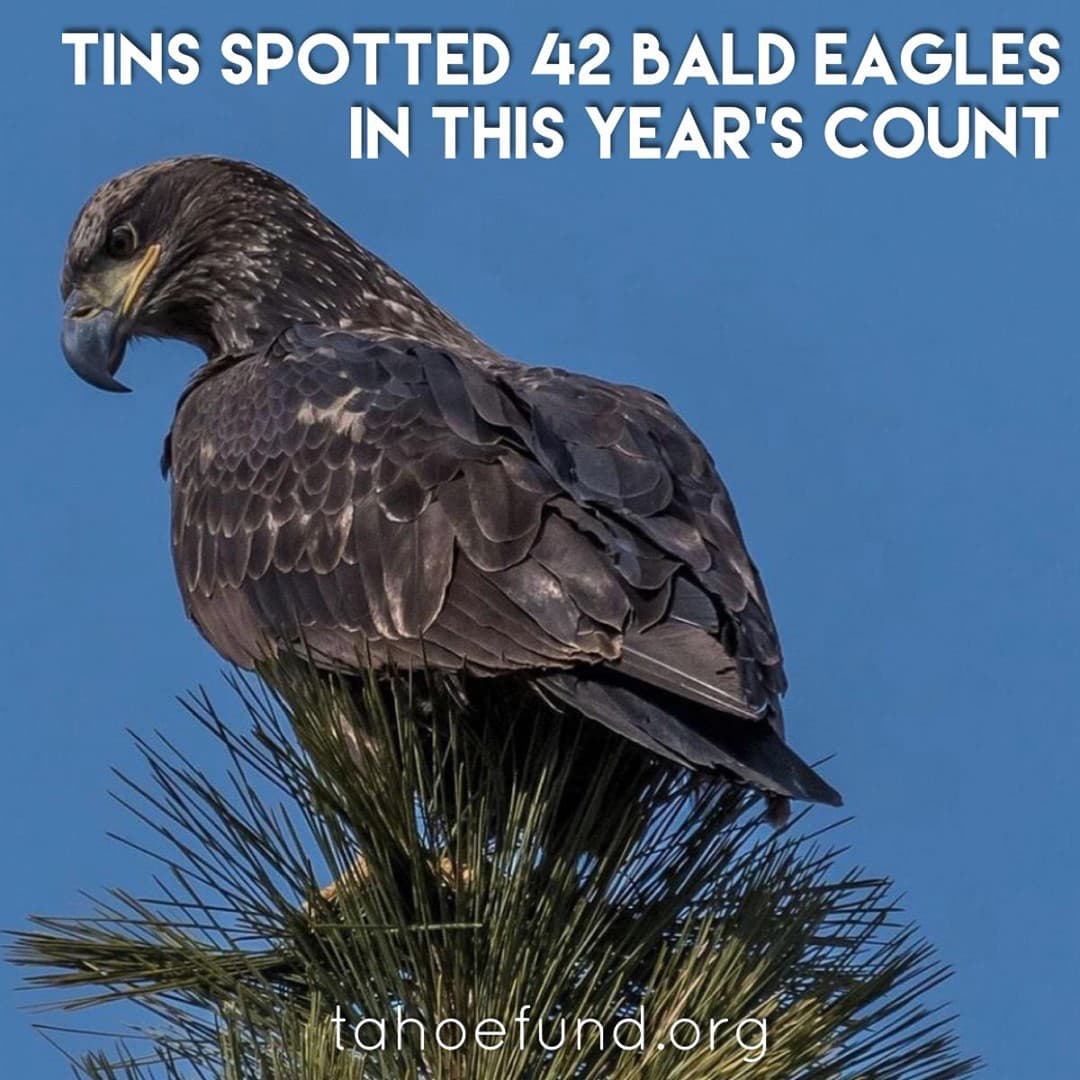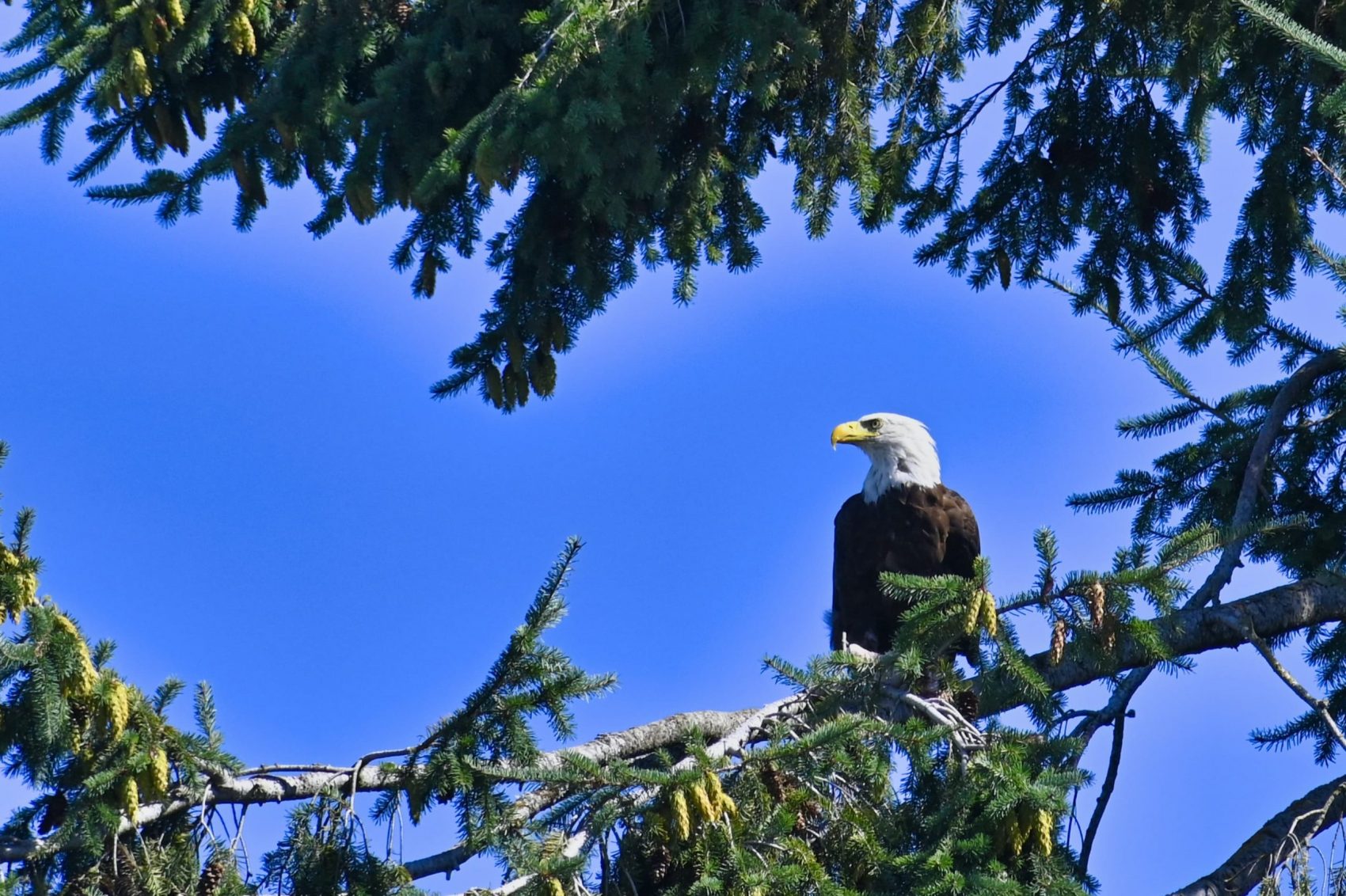
The Tahoe Institute for Natural Science, with a small army of volunteers, recently tallied 42 individual bald eagles around Lake Tahoe.
For the past 40 years, the number of bald eagles in Tahoe have been counted each winter. This year’s count, lead by the Tahoe Institute for Natural Science (TINS), identified 42 individual eagles around the lake. Thanks to the careful and descriptive data collection by volunteers, TINS was able to differentiate 30 individual adults and sub-adults and 12 immature eagles. 2021’s count recorded 15 more eagles than the previous high count of 27, set in 2017.
The first counting effort in 1979 recorded just two bald eagles. Since then, populations have recovered marvelously as a result of the Endangered Species Act of 1973. TINS has coordinated this data collection effort for over a decade.
“In a lot of ways, this count monitors the success of the protections put in place for these eagles, and it’s a lot of fun!”
– Will Richardson, Executive Director – Tahoe Institute for Natural Science.
In addition to record numbers of eagles counted, TINS had over 200 volunteers sign up to help count this year. Tahoe Institute for Natural Science would love to give a big THANK YOU to all of the volunteers for making this year’s Bald Eagle Count a success; this event would not be possible without you.
This year the number of volunteers doubled, and TINS believes this has been the most accurate count to date. As always, the tally is based on careful examination of the timing of movements of individual birds from one station to the next. The tally is believed to be accurate, and if anything, a conservative count.

The bald eagle (Haliaeetus leucocephalus) is a bird of prey found in North America. A sea eagle, it has two known subspecies and forms a species pair with the white-tailed eagle (Haliaeetus albicilla). Its range includes most of Canada and Alaska, all of the contiguous United States, and northern Mexico. It is found near large bodies of open water with an abundant food supply and old-growth trees for nesting.
The bald eagle is an opportunistic feeder that subsists mainly on fish, which it swoops down and snatches from the water with its talons. It builds the largest nest of any North American bird and the largest tree nests ever recorded for any animal species, up to 4 m (13 ft) deep, 2.5 m (8.2 ft) wide, and 1 metric ton (1.1 short tons) in weight. Sexual maturity is attained at the age of four to five years.
Bald eagles are not actually bald; the name derives from an older meaning of the word, “white-headed.” The adult is mainly brown with a white head and tail. The sexes are identical in plumage, but females are about 25 percent larger than males. The beak is large and hooked. The plumage of the immature is brown.
The bald eagle is the national bird of the United States of America. The bald eagle appears on its seal. In the late 20th century, it was on the brink of extirpation in the contiguous United States. Populations have since recovered, and the species was removed from the U.S. government’s list of endangered species on July 12, 1995, and transferred to the list of threatened species. It was removed from the List of Endangered and Threatened Wildlife in the contiguous states on June 28, 2007.